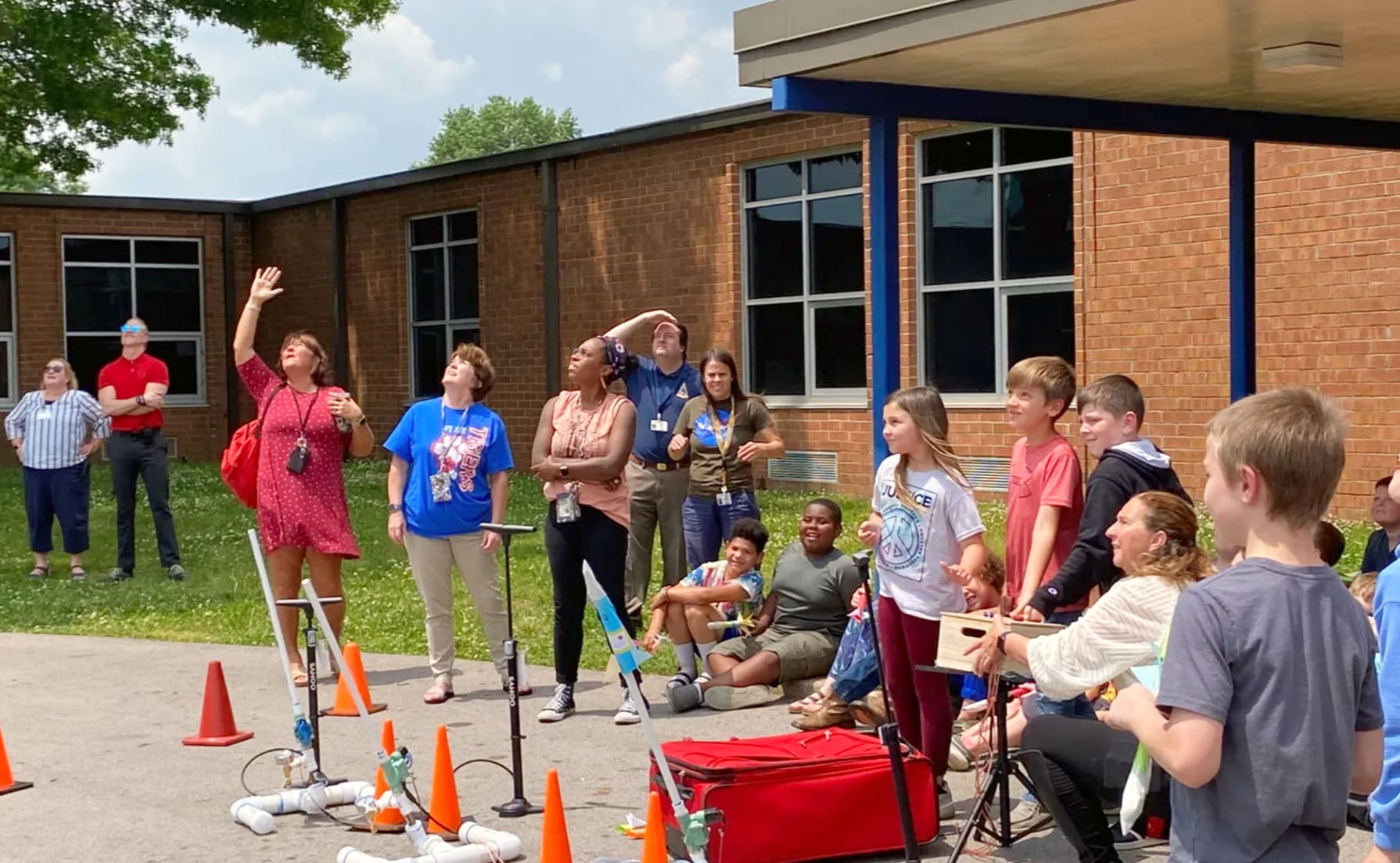Unlocking Young Minds: Giving K-5 Science Students a Jump Start on STEM Careers (part 3)

Welcome to the final part of our three-part blog series on introducing K-5 science students to the exciting fields of science and engineering and STEM careers.
In part one of this series highlighted the significance of teaching science and engineering in elementary school and explained how the Next Generation Science Standards (NGSS) can assist teachers in introducing these subjects to young students. In part two, we explored teaching engineering principals in grades K-5 and shared examples of how several schools across the country are doing it successfully.
In this post, we'll close out this series focusing on the importance of introducing elementary students to STEM (Science, Technology, Engineering, and Math) careers and share examples of how this is being done successfully. And finally, we'll explore how Activate Learning's PRIME K-5 Science curriculum empowers teachers to introduce elementary students to STEM careers through hands-on, phenomena-based learning.
The Urgent Need for Early Exposure to STEM Careers for K-5 Science Students
"What do you want to be when you grow up?"
Almost every child is asked this question before they make it to first grade. While most young children do not necessarily understand the world of career choices open to them, it is still essential to introduce K-5 students to STEM careers early to inspire and motivate them to pursue these fields. When it comes to introducing students to STEM careers, the earlier, the better!
The Department of Labor reports that more than 65% of today's students will grow up having careers that do not exist yet. According to recent research by Perdue University (Early Exposure to STEM and Its Impact on the Future of Work), exposing kids to STEM in elementary school -- specifically between the first and third grade -- provides students with the foundation necessary to fulfill an increased number of STEM-related careers. U.S. adults with 1-2 years of experience in the workforce have reported the highest exposure to STEM concepts in elementary school. Between the ages of 5 and 8, 46% of this population experienced a STEM-related track in school.
The U.S. Department of Education notes that effective STEM education for elementary students should involve:
- hands-on exploration,
- the integration of two or more subjects,
- connection to real-world problems and solutions,
- and the use of technology to facilitate learning.
For students to make connections between real-world ideas and STEM concepts, they need to touch, play, explore, and invent in real life, in real-time. STEM doesn't have to be confined to science or math classes. It can be incorporated into other subjects, like Language Arts, to explore the subject in a new way. By connecting STEM to real-world problems and solutions, students can learn how STEM applies in their everyday lives which will pave the way for their introduction to STEM careers.
How Partnerships and Real-World Projects Bring STEM Careers to Life for K-5 Science Students

[Mt. Pleasant Elementary School students and teachers launch their rockets into the sky as part of U.S. Space Force STEM activity. Credit: Dave Campbell / The Daily Herals]
These are all skills that are crucial for STEM jobs of the future. And it's possible to teach these skills to students in younger grades while introducing them to STEM careers in an exciting way that will make them want to choose STEM careers.
One innovative way to introduce elementary students to STEM careers is through partnerships between schools and private industries. Private industries are increasingly working with schools to introduce younger students to STEM fields early. Let's take a look at several examples of elementary schools implementing career-focused STEM programs through partnerships.
A recent article in The Southern Illinoisan ('Future Salukis' program introduces students to STEM) describes a program at Carbondale Elementary School District No. 95's afterschool program that places Southern Illinois University undergraduates with elementary students at Thomas school.
Undergraduate volunteers from the university's MEDPREP Club, chemistry club, and robotics club work one day each week with students in the afterschool program, teaching basic science concepts through hands-on projects. The program's goal is to expose elementary students to potential careers in STEM and for the students to have a dream and a vision for their future.
Another example of this type of partnership was recently featured in Reasons to Be Cheerful (The City Where Third Graders Train to Be Engineers) which highlighted a program called "Design it, Build it, Ship it" in Greenville, South Carolina. The program encourages third-grade students to create and develop projects using STEM-related skills. One week per month, engineers from local industries visit the classrooms and talk to students about their careers. The goal is to introduce the idea of a career path to students in elementary school and give students the option to follow those programs to middle and high schools so that, hopefully, by eighth grade, they will have a better understanding of what they want to do after high school and what it will take to get there.
Government agencies are also partnering with schools to introduce early learners to STEM careers. According to The Daily Herald (Mt. Pleasant Elementary students launch rockets as part of Space Force program) The U.S. Space Force Space Systems Command and the nonprofit Space STEM Outreach program have partnered to bring the Space STEM Outreach Program to schools around the country. The program aims to inspire and educate students about space, rockets, and satellites, and encourage them to pursue careers in STEM fields.
In one Space STEM Outreach program at Mount Pleasant Elementary School in Tennessee, fourth-grade students designed and launched their own rockets made out of cardboard paper as part of the program. Through interactive lessons in engineering, such as model rocket design and launch, the Space STEM Outreach Program aims to build students' self-confidence and encourage their ability to do math and science, ultimately leading to a future in STEM careers, training, and internships.
These programs demonstrate that introducing students to STEM careers early can be achieved through partnerships between schools and private industries, and by incorporating hands-on and creative learning techniques. Engaging students in real-world problem-solving helps them to learn about STEM concepts in a practical and meaningful way that excites them.
Activating Young Minds: How to Bring STEM Education to Life in the Elementary Classroom
As we come to the end of this three-part blog series, we hope that you've gained some insights into the importance of introducing elementary students to science and engineering. We've discussed the benefits of using phenomena-based learning, how the NGSS addresses many of the challenges educators encounter teaching science to young learners, and how industry-school partnerships can introduce students to STEM careers.
How can educators bring all of these ideas together in the elementary classroom?
That's where Activate Learning's PRIME K-5 curriculum comes in. Developed by UChicago STEM Education and aligned fully with the NGSS, PRIME was designed to address the challenges of teaching science in elementary classrooms. The materials focus on hands-on exploration, integrating multiple subjects, connecting to real-world problems, and incorporating technology to facilitate learning.
One of the unique features of the PRIME curriculum is the inclusion of engineering design projects at each grade level. These projects provide students with opportunities to apply science concepts to engineering questions and problems, allowing them to develop their creativity and problem-solving abilities. Through thinking, reflection, and discussion, students learn to ask questions, explore materials, share and refine ideas, and ultimately make informed decisions using critical thinking skills. To see how this is done, watch the replay of a PRIME webinar we hosted, Discourse in the Elementary Classroom.
If you're a K-5 educator looking for a way to bring science and engineering into your classroom, connect with us to learn more about how PRIME can help your students unlock their potential and prepare them for a phenomenal future!
* * * * * * *




